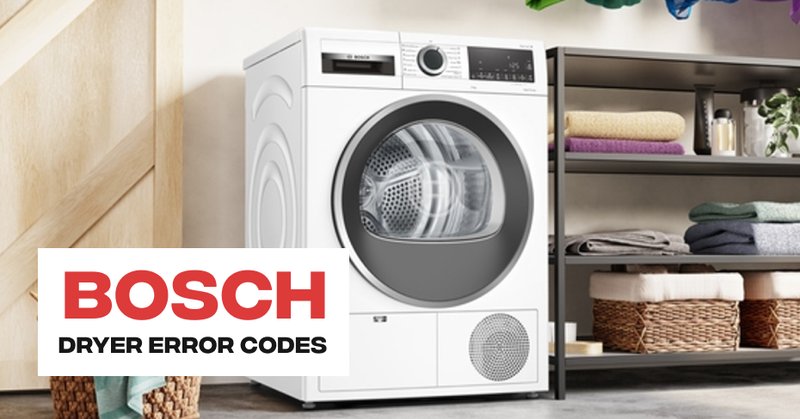
The E1 error code on a Bosch dryer is a signal from your appliance giving you a heads up that something isn’t quite right. Think of it as a blinking “check engine” light on your car’s dashboard. It’s not just a hiccup in the system; it’s your dryer’s way of telling you it needs some attention. But does this mean you should stop using your dryer immediately? Or is it something you can temporarily ignore? Let’s delve deeper to find out.
Understanding the E1 Error Code
When your Bosch dryer displays an E1 error code, it’s essentially saying, “Help me, I’m having trouble!” Specifically, the E1 code usually relates to issues with the dryer’s temperature sensor. This sensor is crucial—it monitors the temperature inside the dryer to ensure it isn’t getting too hot or operating without enough heat. Imagine the temperature sensor as a thermometer for the dryer, constantly checking if things are just right.
You might be wondering, “Why is this sensor acting up?” Well, it could be due to a malfunction or a simple miscommunication with the control board. In some cases, debris or lint build-up could interfere with its operation. Think of it like trying to read a book with smudged glasses. You’re not seeing things clearly, and your dryer might be “reading” its temperature incorrectly.
Now, you might ask, “Can I just reset the dryer and hope the error goes away?” While a reset might clear the code temporarily, if the underlying issue isn’t addressed, you might see the error pop up again. It’s best to dig a little deeper and find out what’s really going on.
Is It Safe to Continue Using the Dryer?
So, here’s the deal: Is it safe to use your Bosch dryer when it’s showing an E1 error? In short, it’s not recommended. Using the dryer with an active error code can lead to inefficient drying, overheating, or even damage to your clothing. Imagine driving a car with a flat tire—not advisable and likely to cause more harm than good.
Let’s break it down: the temperature sensor keeps everything in check. If it’s not working right, your dryer could get too hot, which poses a risk of wear and tear. Additionally, if your clothes aren’t drying properly, this could lead to damp clothing, inviting mildew or odors—definitely not what you’re after!
Instead of chancing it, consider pausing to assess the situation. If you’ve got laundry piling up, you might be tempted to push through, but addressing the error promptly can save you headaches and repair bills down the road.
Troubleshooting and Resolving the Error
Alright, so you understand the error and why it’s risky to keep using the dryer—now what? First off, try giving your dryer a good old-fashioned reboot. Unplug it from the wall, wait a few moments, and then plug it back in. This can sometimes clear minor glitches. Think of it as restarting your computer when it’s acting up.
If restarting doesn’t work, the next step is to check for lint build-up. Turn off the dryer, disconnect it from power, and inspect the lint filter and vent hose. A clearer path for airflow can often resolve minor issues—a bit like removing obstacles from a clogged drain.
However, if the problem persists, it might be time to call in the pros. Contact Bosch customer service or a reputable appliance repair technician. They can perform a thorough diagnostic and determine if a sensor replacement or a more in-depth repair is needed.
What Preventative Measures Can You Take?
To avoid encountering the E1 error in the future, regular maintenance is key. Cleaning the lint trap after every load is a start, but don’t forget about the venting system. Make it a habit to check and clear this area at least once a month.
You might also want to conduct a periodic check-up on your dryer. Consider having a professional inspect it annually—kind of like taking your car in for a tune-up. This way, you can catch potential issues before they turn into costly repairs.
So, the next time you see that E1 error, remember that it’s your dryer’s way of asking for a little TLC. With regular maintenance and prompt attention to errors, you can keep your Bosch dryer running smoothly and safely for years to come. And always keep in mind—when in doubt, it’s best to consult a professional to ensure your appliance remains in tip-top shape.